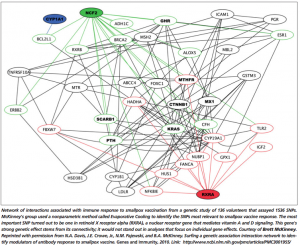TU Data mining Interest Group (TU-DIG it?)
Next Meeting: Journal Club/Data Discussion
Time: Noon, Friday, November 11, 2016
Location: Razyor Hall, 2nd Floor Conference Room
Topic: UK Multimodal Brain Imaging Biobank
Presenter: Dr. Hamed Ekhtiari, Laureate Institute for Brain Research
Article Link: miller-2016-multimodal-population-based-imaging
Dr. Ekhtiari will introduce the neuroimage and clinical data described in this article, and he will discuss similar data that will be available at LIBR. Last time we discussed the limited budget one has to test hypotheses before one overfits the data. In light of this hypothesis testing “budget,” we should discuss data mining strategies for inferring clinically important knowledge from these neuroimaging studies.
Third Meeting: Topic TBD
Time: Noon, Friday, December 2, 2016
Location: Razyor Hall, 2nd Floor Conference Room
Topic:
Presenter:
Article Link:
What is TU-DIG?
Do you deal with big data or data that poses analytical challenges? TU-DIG is a community for data miners and modelers to meet with data creators and domain experts to solve problems in science, engineering, or social science. The format of the meetings are flexible: journal club, teaching, tutorial, research in progress, data jam challenge, and “data clinic.” The data domains are flexible: biology, bioinformatics, psychology, engineering, science, business, economics…
Data Clinic (attendees drive the content): If you have data you would like to discuss, you can present it at the data clinic for discussion and diagnosis. The data clinic can be used to discuss new data analysis methods as well.
Previous Meetings
Journal Club/Research in Progress
Time: Noon, Friday, October 28, 2016
Location: Razyor Hall, 2nd Floor Conference Room
Topic: Differential Privacy in Machine Learning, Applications in Bioinformatics
Presenter: Trang Le. PhD candidate in Mathematics
Article Link: dwork_2015_science
In Silico Lab news:
Our research in epistasis networks is featured in an interview for
Biomedical Computation Review. The figure featured in the article
is from our SNPrank analysis of vaccine immune response, showing the network importance of RXRA (Genes and Immunity, open access ).
